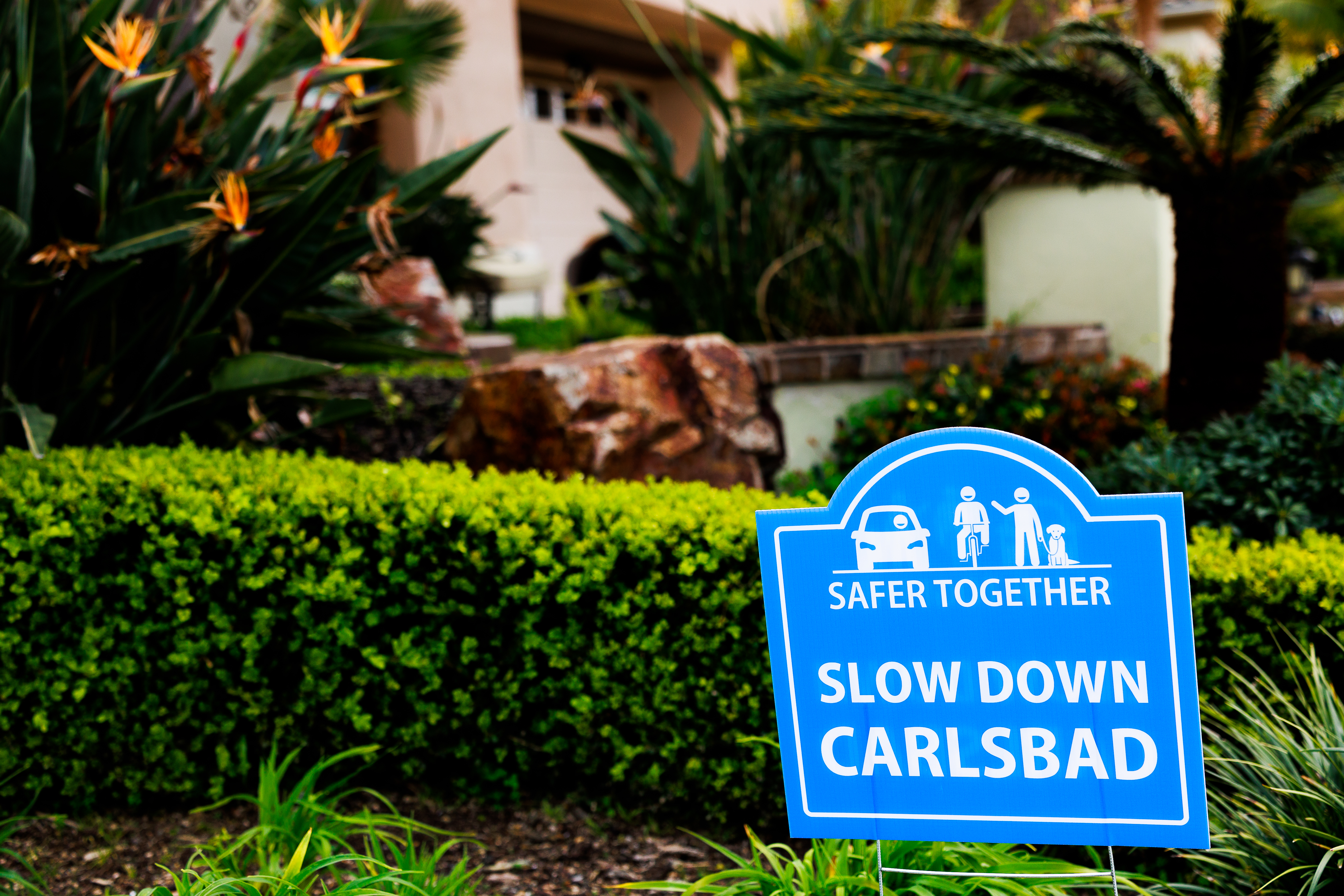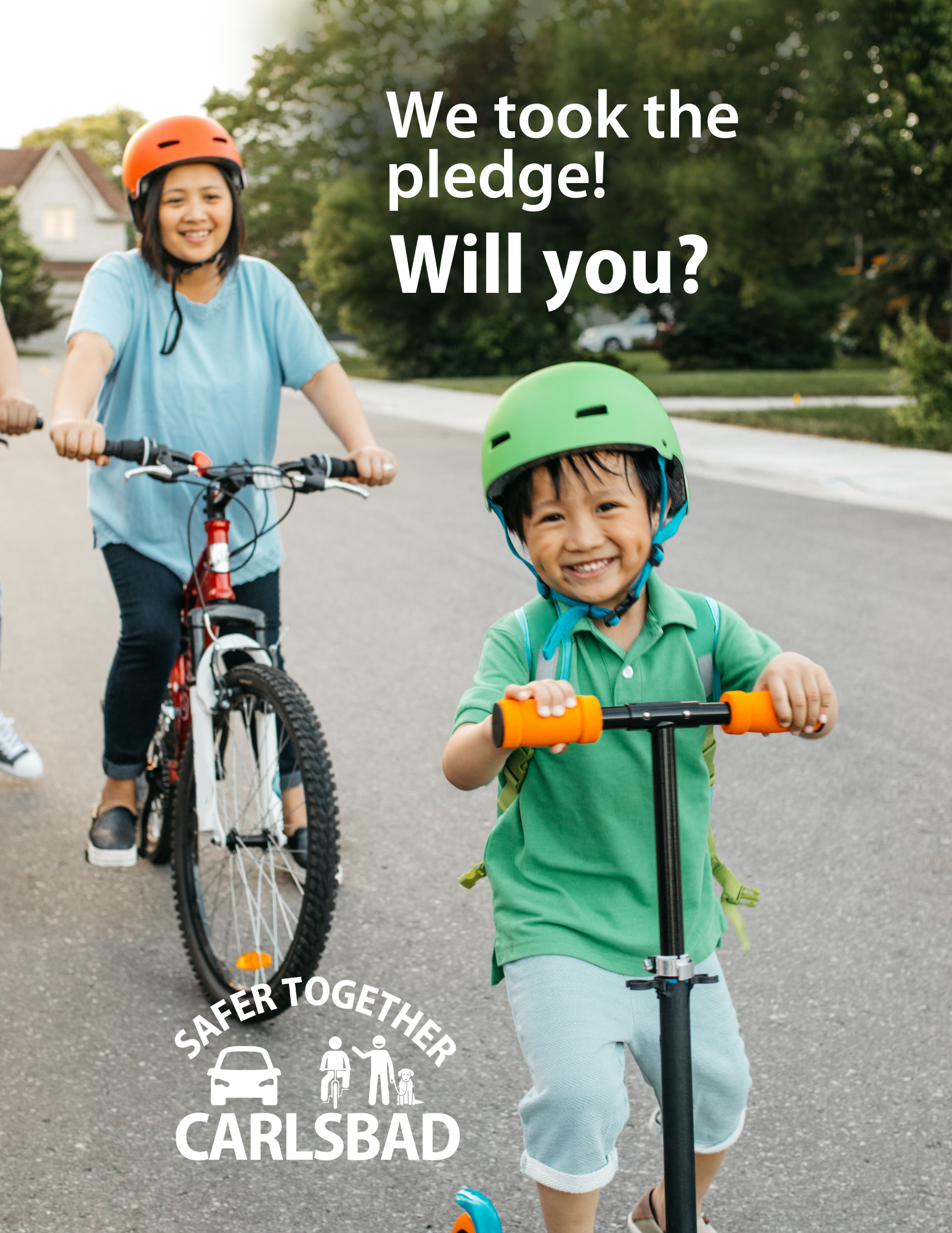How Carlsbad moved the needle on traffic safety
Guest article by Geoff Patnoe, assistant city manager for Carlsbad. He can be reached at geoff.patnoe@carlsbadca.gov.
.png?sfvrsn=ca52a9c9_1) In 2022, two fatal bike collisions within an 11-day period put the nation’s traffic safety crisis front and center for Carlsbad, a seaside town of about 115,000 people in San Diego County. With bike and e-bike collisions in the city increasing over 200% compared to pre-pandemic levels, Carlsbad had already increased enforcement and education. It was also making steady progress in changing its transportation plan to focus on all types of users.
In 2022, two fatal bike collisions within an 11-day period put the nation’s traffic safety crisis front and center for Carlsbad, a seaside town of about 115,000 people in San Diego County. With bike and e-bike collisions in the city increasing over 200% compared to pre-pandemic levels, Carlsbad had already increased enforcement and education. It was also making steady progress in changing its transportation plan to focus on all types of users.

With the start of the school year weeks away — putting hundreds more bicyclists, drivers, and pedestrians on local roads — city leaders decided more needed to be done quickly. On Aug. 23, the city declared a local traffic safety emergency. Just like with a fire or flood, the declaration immediately established traffic safety as an urgent citywide priority. While initial short-term actions focused near schools, the Carlsbad City Council gave top experts from all departments 30 days to come up with a comprehensive strategy to reduce injury collisions.
“I knew our team had the talent,” said City Manager Scott Chadwick. “The emergency put them into a new structure to collaborate, with room to think outside the box. I challenged each person on the team to give me something bold, something new. No idea was off the table.”
The result was a plan with 42 specific actions the city could take to improve traffic safety. Not all would make the cut — like a multimillion-dollar idea to bring back school busing or a proposal to incorporate street art to highlight road markings. However, the ideas the city council ultimately approved in a Safer Streets Together Plan would go on to reduce injury collisions by 13% within 12 months, a trend that continues to hold today.
No doubt our emergency proclamation made a difference. But cities can apply some of the most effective strategies outside of a formal emergency.

Create momentum
We focused first on actions that could be completed quickly. Crews put up new traffic safety signs, added green paint to conflict zones, and refreshed road striping throughout the city. At the same time, the Police Department temporarily reassigned officers to traffic patrol, putting officers in school neighborhoods and other high-traffic areas. Banners and signs throughout the city kicked off the education campaign. Staff pulled these efforts together within a couple of weeks, creating instant momentum and providing the time to develop long-term efforts.
Present a comprehensive solution
The three Es of traffic safety — education, engineering, and enforcement — provided a framework to help policymakers and the public better understand the city’s comprehensive approach. Simply increasing enforcement alone would not produce lasting results. Likewise, education rarely moves the needle. But combined with increased enforcement and changes to local roads, our education messages broke through. Major changes to local roads can quickly run into community opposition. But as part of a more comprehensive approach to community safety, they were more widely accepted.
Everyone owns the problem
Before launching these efforts, we routinely received complaints about different road users. The recent focus was the “darn kids” on e-bikes. Before that, it was the weekend cyclists. Some blamed drivers for going too fast and not paying attention. As long as people were blaming each other, we were not going to solve the problem. Instead of creating an e-bike safety campaign, we decided to focus on all users of the road, with the message that everyone plays a role in traffic safety. Putting our community all on the same side of this issue created an environment where we could all be part of the solution.
Ask for help
The city engaged dozens of local schools, hundreds of businesses, mobility organizations, and others in supporting the Safer Together Plan. Whether it was appearing at news conferences, sharing information with their email lists, participating in public service announcements, hosting media events, or distributing campaign materials, these partnerships greatly expanded the reach of the city’s message and lent third-party credibility to our efforts. These enhanced relationships continue to this day, benefiting everyone involved.
Create a shared commitment
One of the most powerful drivers of human behavior is social norms: We want to fit in. That’s why the city launched a community commitment campaign asking residents to sign an online form pledging to use Carlsbad’s streets safely. In exchange, they got a yard sign and car window cling showing their support for safer streets. Today, you can’t drive more than a few blocks in Carlsbad without seeing the bright blue “Safer Together Carlsbad” signs, which serve as a constant reminder that using our streets safely is a shared community value.
Go to the source
Although our campaign focused on all users of the road, one of our main concerns was young e-bike riders. Our Police Department worked with local schools to develop a safety training program within the first six months of the plan’s implementation. This eventually turned into a new requirement for students who want to park a bike or e-bike on campus.
The emergency declaration ended Sept. 8, 2023, but the city council continues to prioritize traffic safety and the plan that came out of the emergency. What’s more, the lessons learned from this experience will benefit us for years to come. I hope they can help your city too.
For more information about Safer Streets Together Carlsbad, visit online Safer Streets Together hub or email communications@carlsbadca.gov.
The Cal Cities #LocalWorks initiative shines the spotlight on examples of local actions that are making a difference to their communities. Show how #LocalWorks in your community by contacting communications@calcities.org.
